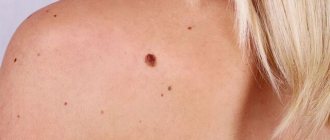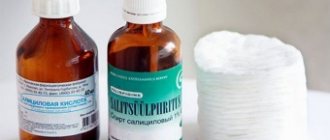Where is topical anesthesia used?
Most often it is used for pain relief when puncturing the skin during catheter insertion, injections, blood sampling, as well as in the following areas of medicine, such as:
- dentistry (for removing teeth and tartar, to relieve the gag reflex during procedures);
- surgery (for superficial surgical interventions. For example, when harvesting a flap for skin grafting, during mechanical cleaning of trophic ulcers);
- dermatology (for removal of molluscum contagiosum);
- cosmetology (before tattooing, hair removal, mesotherapy, laser therapy);
- gynecology (for removal of condylomas);
- pediatrics (for blood sampling, vaccinations).
Contraindications and possible side effects
A distinctive feature of Emla is a small list of contraindications for its use:
- increased sensitivity of the body to the main analgesic components;
- some blood diseases (methemoglobinemia);
- taking sulfonamides;
- period of bearing a child (relative contraindication);
- damage to the skin in the form of wounds and scratches;
- individual intolerance.
Sometimes after using Emla, side effects may occur:
- pallor or redness of the skin at the site of application of the product;
- itching or burning;
- swelling of tissues;
- rashes.
An overdose of the drug may cause unpleasant consequences in the form of:
- overexcitability of the nervous system;
- weakness in muscle tissue;
- disturbances in the functioning of the respiratory and cardiovascular systems (difficulty breathing, rapid heartbeat);
- general weakness.
Lidocaine spray and EMLA: what is the difference?
The drugs differ in composition. If the spray contains only one substance - lidocaine, then EMLA cream contains lidocaine along with prilocaine.
Lidocaine and prilocaine belong to the class of amides of intermediate action. Their effect lasts on average 1-1.5 hours.
The anesthetic effect of lidocaine is 4 times higher than that of novocaine. It does not penetrate well through the surface epithelium of the skin. Therefore, the spray is more often used when performing manipulations on the mucous membranes - there the effectiveness of pain relief is higher.
Prilocaine is slower but longer acting than lidocaine and is less toxic. The combination of two anesthetics in EMLA cream allows you to prolong the effect of the drug and provide it with additional functions. For example, with ELMA the depth of pain relief depends on the duration of application, while with lidocaine spray the effect extends only to the superficial layers of the skin and then only when additional conditions are created (applying a patch or film that prevents moisture evaporation). Thus, the cream is suitable for both procedures performed on the skin and those performed on the mucous membranes.
Emla instructions for use
Emla — local anesthetic drug; local anesthetic for superficial anesthesia of the skin and mucous membranes. It is used for superficial anesthesia of the skin and mucous membrane, incl. genital organs: injections, insertion of a needle for blood sampling or catheterization, superficial surgical interventions, incisions of the skin or mucous membrane, removal of warts, surgical treatment of chronic ulcers of the extremities, taking skin flaps.Emla is a new drug for anesthesia of intact skin:
Anesthesia of intact skin has until now been impossible without a preliminary painful injection of a local anesthetic solution. Patients have become accustomed to the idea that painless manipulation of the skin area must be accompanied by a preliminary painful injection of a local anesthetic solution. The introduction into clinical practice of a new drug for anesthesia of intact skin, Emla cream (AstraZeneca), has become a new significant step in overcoming iatrogenic pain.
The major clinical significance in introducing Emla cream into clinical practice is as follows:
- painful procedures (vein puncture, lumbar puncture, removal of candylomas, etc.) have become painless and do not cause negative reactions from the patient;
- procedures that are usually performed under general anesthesia (puncture biopsy, skin grafting, etc.) can now be performed under Emla cream anesthesia, which significantly reduces the risk of possible complications and reduces the cost of anesthesia.
Compound:
1 g of Emla cream or 1 Emla patch contains lidocaine hydrochloride 25 mg and prilocaine hydrochloride 25 mg.
pharmachologic effect
Emla is a local anesthetic drug; local anesthetic for superficial anesthesia of the skin and mucous membranes. Lidocaine and prilocaine, which are part of the drug Emla, are amide-type local anesthetics.
Emla stabilizes the neuronal membrane, blocks voltage-dependent sodium channels, inhibits ionic current, prevents the generation of impulses in the endings of sensory nerves and the conduction of excitation along nerve fibers, which leads to the development of local anesthesia.
Emla, applied to intact skin under a tight bandage, has an analgesic effect due to the release of lidocaine and prilocaine from the cream. Local anesthetics, penetrating into the layers of the epidermis and dermis, cause anesthesia of the skin.
Emla at the site of application causes a biphasic vascular response consisting of initial vasoconstriction and subsequent vasodilation.
The degree of anesthesia depends on the dose of the drug and the duration of application of Emla cream. The time to achieve the required level of anesthesia after using Emla for intact skin is 1-2 hours. Anesthesia of the genital mucosa is achieved faster than for intact skin due to faster absorption of the drug.
The duration of anesthesia after exposure to Emla for 1-2 hours ranges from 30 minutes. up to 2 hours. During puncture biopsy, the use of Emla cream provides adequate anesthesia of intact skin in 90% of patients 60 minutes after application.
In women, 5-10 minutes after applying Emla cream to the genital mucosa, anesthesia sufficient to relieve pain caused by the use of an argon laser is achieved; The duration of anesthesia is 15-20 minutes (taking into account individual characteristics from 5 to 45 minutes).
When treating trophic ulcers of the lower extremities, the duration of anesthesia after applying Emla cream is up to 4 hours. There is no negative effect of Emla on the healing process of ulcers or on bacterial flora.
Pharmacokinetics:
Systemic resorption of lidocaine and prilocaine from Emla cream depends on the dose, duration of application, skin thickness and other features. After application of Emla to the facial skin (10 g/100 cm^2 for 2 hours), the systemic resorption rate is approximately 10%. In adults, after applying 60 g of Emla cream to intact skin of the thigh with an area of 400 cm^2 (0.2 g per 10 cm^2) for 3 hours, systemic absorption of lidocaine is approximately 3%, prilocaine - 5%. Absorbed slowly. The maximum concentration in the blood plasma of lidocaine and prilocaine is achieved 2-6 hours after the application of Emla. In the treatment of trophic ulcers of the lower extremities, the time to reach Cmax of lidocaine and prilocaine in the blood plasma is 1-2.5 hours from the moment Emla is applied to the ulcer surface (5-10 g of cream for 30 minutes). After application of 10 g of Emla cream to the mucous membrane for 10 minutes, the maximum concentration of lidocaine and prilocaine in the blood plasma was achieved after 20-45 minutes. With repeated application of Emla cream, accumulation of prilocaine, lidocaine and their metabolites is not observed. In patients with advanced neurodermatitis, the rate of absorption increases.
Indications
Emla cream is used for superficial anesthesia of the skin during the following manipulations:
- administering injections, inserting a needle for blood sampling or catheterization;
- superficial surgical interventions (skin incisions);
- surgical treatment of chronic limb ulcers (mechanical cleaning);
- taking skin flaps.
Emla cream is used for superficial anesthesia of the mucous membrane, incl. genital organs during the following manipulations:
- surgical interventions on the mucous membranes (incision of the mucous membrane, removal of warts);
- before performing infiltrative anesthesia (injection of local anesthetics).
Topical anesthesia is the optimal type of pain relief for lithotripsy. Anesthesia with Emla cream was performed in a group of 25 patients aged 30-35 years with urolithiasis. The use of Emla cream during lithotripsy is a safe and effective method of pain relief.
Instructions for use
Emla is used externally. The dose of Emla and the time of application depend on the manipulation performed.
Emla cream:
For adults, for superficial anesthesia of intact skin, Emla cream should be applied at least 1 hour before the procedure, under the bandage; the drug can be left for several hours. Apply the required amount of Emla cream to the surface of the skin. Take the included bandage and remove the central part. Remove the protective paper. Cover the cream so that a thick layer forms under the bandage. Gently smooth out the dressing, avoiding leakage. Remove the paper frame. The time for applying Emla can be indicated directly on the bandage. When removing the bandage, wipe off any remaining cream, clean the surface with alcohol and prepare the patient for surgery.
For skin anesthesia in adults, Emla cream is applied at a dose of about 1.5 g/10 cm^2 for 1-5 hours (for minor procedures - needle insertion, puncture or catheterization of a vessel, surgical treatment of minor injuries) and 1.5-2 g/10 cm^2 for 2-5 hours (on large surfaces - skin grafting).
For superficial anesthesia of trophic ulcers of the lower extremities, before their surgical treatment (mechanical cleaning), Emla cream should be applied in a thick layer to the ulcerative surface under an occlusive PVC dressing in a dose of 1-2 g/10 cm2 (no more than 10 g per procedure) for 30 minutes. If penetration of Emla into the ulcer tissue is difficult, the duration of application can be increased to 60 minutes. Mechanical cleaning of the ulcer should begin no later than 10 minutes after removing the cream.
For superficial anesthesia of the genital organs, before injections of local anesthetics, Emla cream should be applied in a thick layer to the skin for men at a dose of 1-2 g/10 cm^2 for 15 minutes, for women at a dose of 1 g/10 cm^2 for 60 minutes.
Anesthesia of the genital mucosa in adults during surgical treatment of localized lesions, removal of warts (condylomata acuminata): 5-10 g of Emla cream for 5-10 minutes (without a tight bandage). The procedure should be carried out immediately after removing the cream.
Use of Emla in children:
The dose and time of application of Emla cream depend on the age of the child.
Age
| Maximum application area (total cream dose) | Application time | |
| 3-12 months | 2 g / 20 cm^2 | 1 hour |
| 1-6 years | 10 g / 100 cm^2 | 1 hour (maximum 5 hours) |
| 6-12 years | 20 g / 200 cm^2 | 1 hour (maximum 5 hours) |
For patients (especially children) with widespread neurodermatitis (atopic dermatitis), the application time of Emla cream should be reduced to 15-30 minutes.
Emla patch:
Adults - 1 or more Emla patches. The area of skin selected for anesthesia is first cleaned and dried. You should bend the aluminum edge of the patch and, taking it by the flesh-colored corner, separate the layers of the patch. To ensure good adhesion, press the patch to the skin along the edges (do not press on the center). The minimum application time is 1 hour, the maximum is 5 hours. After using the Emla patch, treat the skin surface with an antiseptic.
Children under 3 months:
for a period of about 1 hour, no more than one Emla patch.
Children 3-11 months:
application time is 1-4 hours. No more than two patches can be fixed at the same time.
Children 1-5 years old:
for 1-5 hours. The maximum recommended dose is 10 patches.
Children 6-11 years old:
application time 1-5 hours, no more than 20 patches.
Overdose
Systemic toxic reactions are possible.
Symptoms:
central nervous system stimulation, convulsions; in severe cases, depression of the central nervous and cardiovascular systems develops. In some cases, children experienced the development of clinically significant methemoglobinemia.
Application of 125 mg of prilocaine for 5 hours caused the development of moderate methemoglobinemia in a three-month-old child.
Application of lidocaine at a dose of 8.6-17.2 mg/kg caused severe intoxication in newborns.
Treatment:
The unabsorbed portion of Emla should be removed from the skin surface.
If symptoms from the central nervous system (convulsions, central nervous system depression) occur, symptomatic therapy is indicated, incl. prescription of anticonvulsant therapy; if necessary, artificial ventilation of the lungs and maintenance of vital functions.
If methemoglobinemia develops, methylene blue should be used as an antidote. It is necessary to monitor the patient for several hours after the start of treatment for intoxication due to the slow systemic absorption of the components of the drug Emla.
Contraindications
- individual intolerance (including a history of hypersensitivity) to amide-type local anesthetics or other components of Emla;
- congenital or idiopathic methemoglobinemia.
Emla should not be used in children under three months of age or in children aged 3 to 12 months who are being treated with drugs that may cause methemoglobinemia.
Pregnancy and lactation
It is possible to use Emla during pregnancy and lactation according to indications and in recommended doses. Lidocaine and prilocaine penetrate the placental barrier and can be distributed into fetal tissues.
However, there is evidence that when lidocaine and prilocaine were used by a large number of women of childbearing age and pregnant women, reproductive dysfunction, an increase in the incidence of malformations, or any other negative effect on the fetus were not observed.
Lidocaine and, possibly, prilocaine pass into breast milk, but in such minimal quantities that do not pose a risk to the baby (when Emla is used by a nursing mother in therapeutic doses).
Side effects
Pallor (often), burning or itching sensation, redness, swelling (weak and transient), allergic reactions (rare;
In severe cases, the development of anaphylactic shock), hemorrhagic rash or pinpoint hemorrhages (especially after prolonged application in children with widespread neurodermatitis or molluscum contagiosum), methemoglobinemia in children.
special instructions
Emla should not be applied to open wounds. Currently, there is not enough research on the absorption of Emla under these conditions. However, there is positive experience with the use of Emla cream for ulcerative lesions of the lower extremities.
If the recommended application time for Emla is exceeded, the degree of anesthesia is reduced.
Emla should be used with caution in the periorbital areas (near the eyes), as it may cause irritation to the cornea.
Emla cream should not be used if it can penetrate into the middle ear. Emla cream should not be applied to damaged tympanic membrane.
Emla should be used with caution in patients with atopic dermatitis. Application time in patients with atopic dermatitis should be no more than 15-30 minutes.
In children under 3 months of age, the safety and effectiveness of Emla cream is determined after applying a single dose. In children of this age, after applying Emla cream, a temporary increase in the concentration of methemoglobin in the blood may be observed for up to 13 hours, which has no clinical significance.
It is not recommended to use Emla cream in premature infants and children under 12 months while taking methemoglobin-inducing drugs.
Emla should not be used to anesthetize the skin before receiving live vaccines (BCG).
The integrating specific component of central anesthesia when using Emla is Relanium.
Drug interactions
The drug (mainly due to prilocaine) can enhance the formation of methemoglobin when used together with drugs that induce methemoglobinemia (for example, sulfonamides).
With the simultaneous use of Emla with other local anesthetics and drugs structurally similar to them (including tocainide), the risk of systemic side effects may increase.
Storage conditions and periods
List B. The cream should be stored out of the reach of children at a temperature below 30°C (do not freeze). Shelf life: 3 years.
Conditions for dispensing from a pharmacy
Emla is available with a doctor's prescription.



